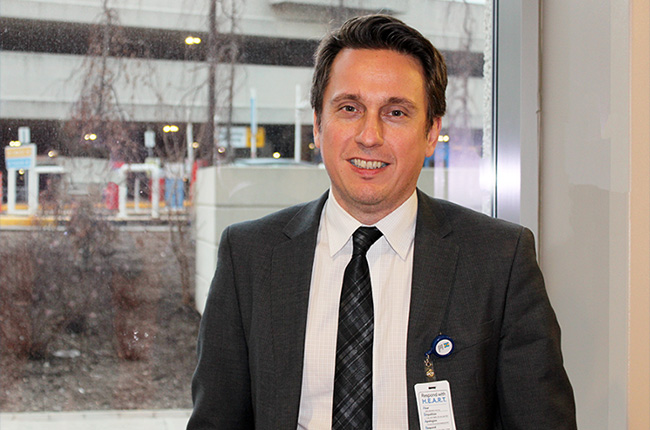
MAY 3, 2021 • By Jessica MacInnis
Professor Ervin Sejdić recently joined The Edward S. Rogers Sr. Department of Electrical & Computer Engineering (ECE).
Sejdić received his PhD from Western University and completed a post-doctorate fellowship at U of T and Holland Bloorview Kids Rehabilitation Hospital. From 2010 to 2011, he was a research fellow at Harvard Medical School before joining the University of Pittsburgh as a faculty member.
“We are thrilled to have Professor Sejdić join ECE,” says Professor Deepa Kundur, Chair of ECE. “His research at the interface of artificial intelligence and health care will positively impact patients and builds bridges between the Department and North York General Hospital for our researchers and students.”
In 2016, President Barack Obama presented Sejdić with the Presidential Early Career Award for Scientists and Engineers, the highest honour bestowed by the U.S. for researchers in the early stage of their careers.
ECE’s Jessica MacInnis spoke with Sejdić to learn about his research, what drives his teaching philosophy and why his return to Toronto brings him full circle.
Tell us about your research.
As an electrical engineering student, I focussed on the theoretical side of the discipline. It wasn’t until I took a post-doc position with Professor Tom Chau (BME), that I realized I could apply this theoretical work to help improve human health. I apply data science, signal processing and machine learning to resolve major health issues.
Most of my work these days is in two areas: swallowing difficulties and how we can detect these non-invasively, and gait issues. Falls and fall-related issues are the biggest contributors to health care expenses in the U.S. In my lab, we use inexpensive, readily available sensors — like smartphones and accelerometers — and try to collect as much data as possible in order to predict human functional outcomes, in particular swallowing and gait.
What excites you about this research?
I think the translational nature of this work is what excites me. We go from developing algorithms and theoretical development all the way to implementation in clinics where we can actually see our work helping real patients.
Why did you choose ECE at U of T Engineering?
Even though I’ve been in the U.S. for more than a decade, I’ve always kept strong ties to U of T and Toronto in general. I’ve collaborated with a number of U of T researchers on projects and papers over the years, so I’m familiar with the calibre of research and students here.
My position at ECE is in conjunction with a really exciting opportunity at North York General Hospital (NYGH) where I hold the Research Chair in AI for Health Outcomes — this is an excellent opportunity to see our work implemented in a clinical setting. Having access to talented students and top-notch researchers at U of T and seeing the work translated through my role at NYGH was instrumental in my decision to join ECE.
Can you expand on the collaborations and interdisciplinary work that you most look forward to pursuing?
My expertise is in signal processing and data science so the opportunity to work with NYGH is really exciting because it gives my lab access to lots of data, as well as a clinical perspective — working with real patients and helping to improve their health outcomes.
I’ll be splitting my time between the hospital and campus so my students and I will be developing algorithms and then deploying them in hospital settings. We will be working with patients, physicians, clinicians: bringing what we know to the hospital and taking what we learn there back to campus. So it’s really exciting to see the back-and-forth translational nature of this work.
We are also looking at how machine learning can help in primary care: patients who see family physicians. I’m also looking forward to my continued collaboration with Professor Milos Popovic (BME), as well as working with CRANIA and the Dalla Lana School of Public Health to see how we can distribute these algorithms to help improve health care in the community.
What do you hope to accomplish as an educator and as a researcher here in the next few years?
I’m always striving to educate the next generation of top electrical engineers and researchers. But beyond that, and especially at the undergraduate level, I want to encourage students to think about how they can apply the concepts of electrical engineering that they are learning in classes and labs to improve humanity.
We can always improve sensors, machines and devices, but how can we improve people’s lives through our engineering work? This is something that I didn’t consider as an undergraduate student and it was a big revelation for me — we are not just learning circuits. We can actually apply these theories and concepts to improve somebody’s life.
For more information:
Jessica MacInnis
External Relations Manager
The Edward S. Rogers Sr. Department of Electrical & Computer Engineering
416-978-7997 | jessica.macinnis@utoronto.ca